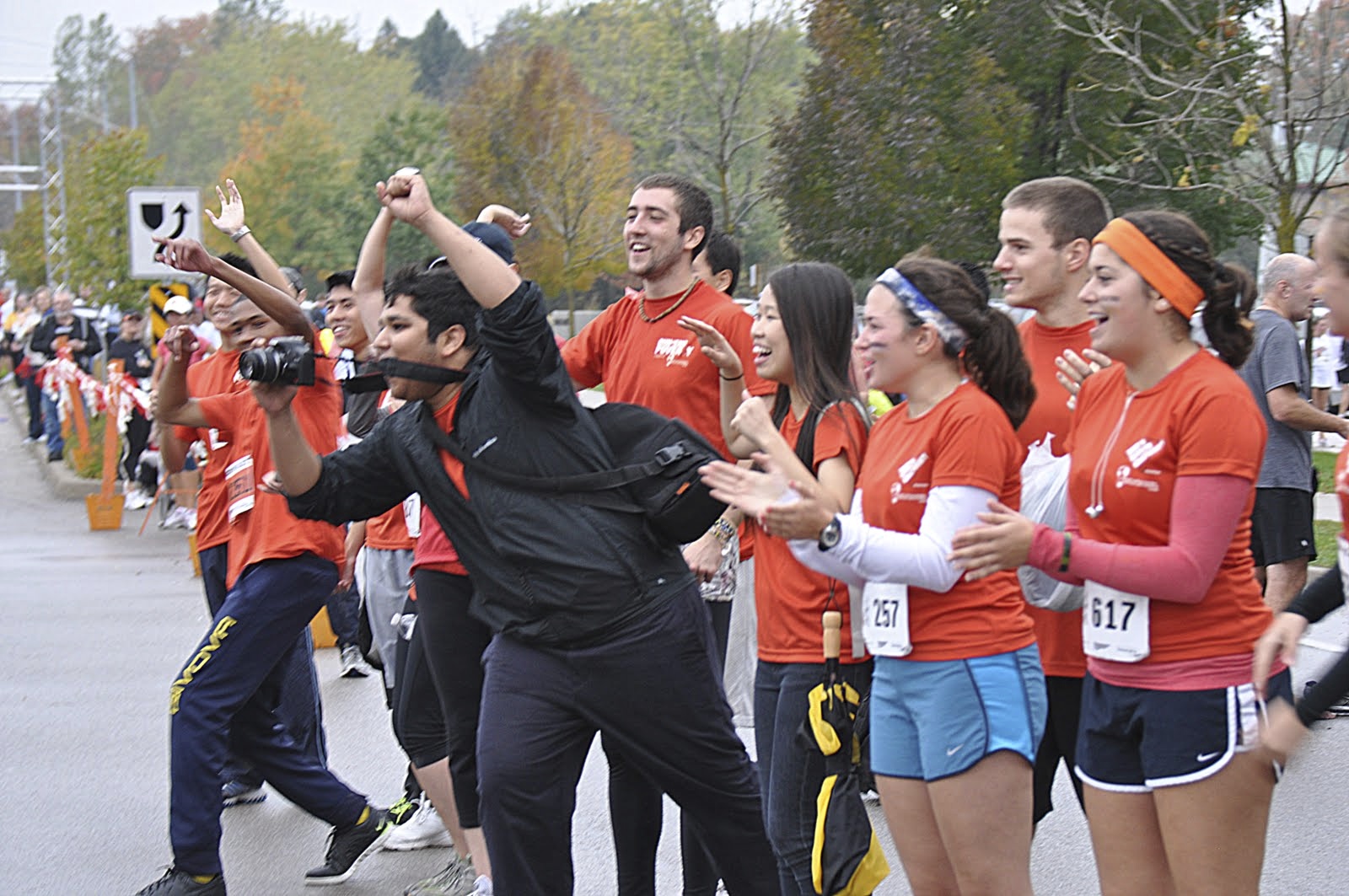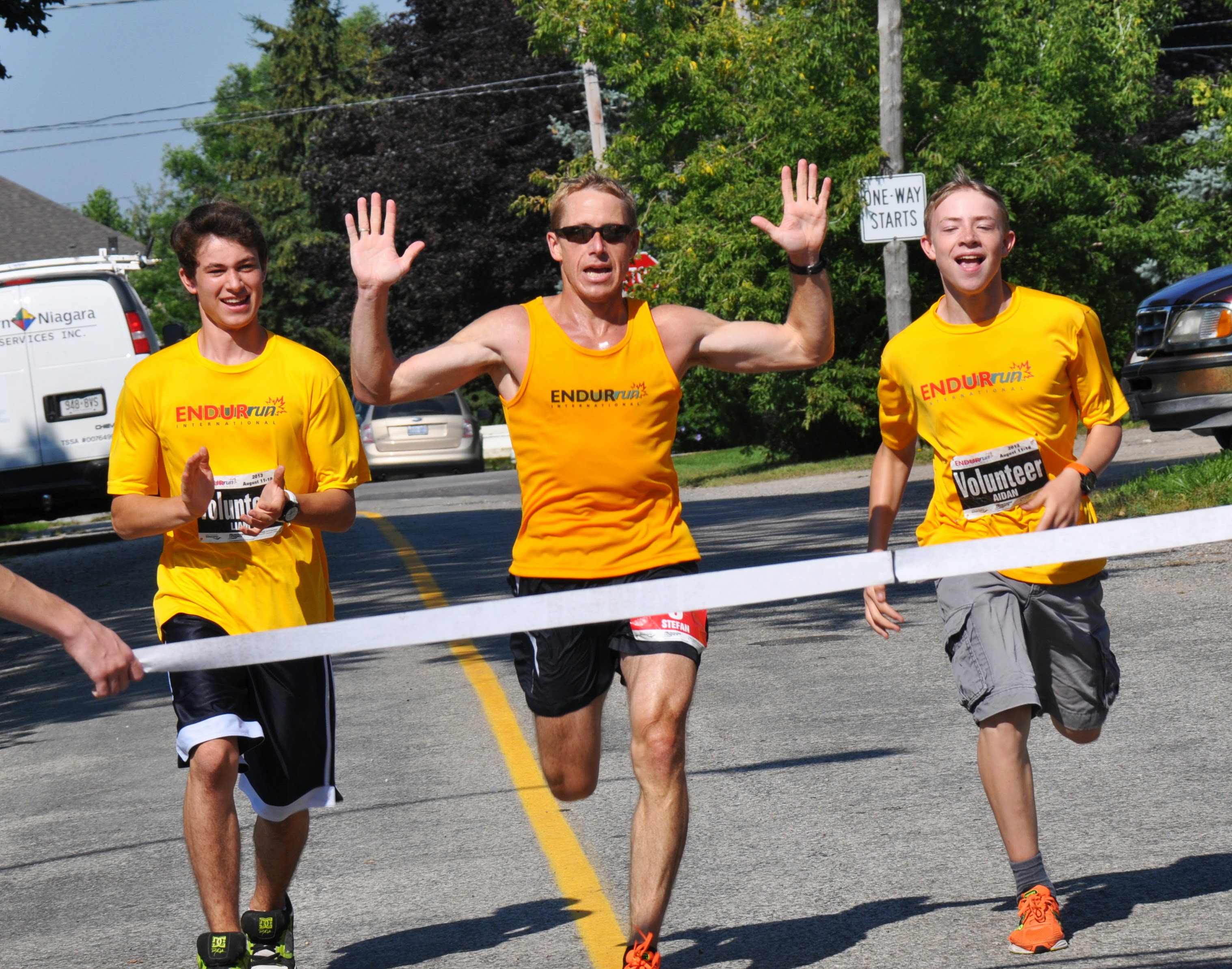 Running How-Tos is a crowd-sourced collection of running tips and tricks, by runners, for runners. Do you have something to share? Submit yours here.
Running How-Tos is a crowd-sourced collection of running tips and tricks, by runners, for runners. Do you have something to share? Submit yours here.
Believe it or not, spectating is a significant element of the racing scene. Spectators can add, or detract, just as much from a race as the participants themselves. Whether or not you are a runner yourself, here are some things you should consider in order to be the best spectator, and cheerleader, you can be:
1. Be encouraging!
 No runner appreciates being told to “run faster” during a race, or that they are “almost there” when the finish line is anything more than 200m away. Trust me, they already feel like they are moving as fast as they possibly can. Instead, one of the best things you can do is offer generic support through cheers such as “good job,” “way to go,” or “strong finish!” Clapping and other non-verbal encouragement such as cowbells and signs are always welcome, too. The great thing about this type of support is that you can cheer for strangers just as effectively as you can for friends and family – and they will most assuredly be grateful.
No runner appreciates being told to “run faster” during a race, or that they are “almost there” when the finish line is anything more than 200m away. Trust me, they already feel like they are moving as fast as they possibly can. Instead, one of the best things you can do is offer generic support through cheers such as “good job,” “way to go,” or “strong finish!” Clapping and other non-verbal encouragement such as cowbells and signs are always welcome, too. The great thing about this type of support is that you can cheer for strangers just as effectively as you can for friends and family – and they will most assuredly be grateful.
2. Know your runner
 If you know your runner’s personal goals for the race, you can provide them with specific information along the way, such as whether they are ahead or behind their goal pace. Another strategy that I have used in the past is to arrange with your runner, in advance, key words they want to hear during the race, either to help them relax, to motivate them, or to remind them about a specific aspect of their form. Repeating these key words can help them to refocus. You can also play to your athlete’s sense of humour, by having a sign prepared or calling out something that will make them laugh or smile. Be careful not to choose something that might offend them, or someone else on the course that oversees/hears.
If you know your runner’s personal goals for the race, you can provide them with specific information along the way, such as whether they are ahead or behind their goal pace. Another strategy that I have used in the past is to arrange with your runner, in advance, key words they want to hear during the race, either to help them relax, to motivate them, or to remind them about a specific aspect of their form. Repeating these key words can help them to refocus. You can also play to your athlete’s sense of humour, by having a sign prepared or calling out something that will make them laugh or smile. Be careful not to choose something that might offend them, or someone else on the course that oversees/hears.
3. Know the course
 If the course allows, get to as many places as you can! When I was running cross-country in high school, my mom would pop out of the woods every few minutes during a race to encourage my teammates and I. Similarly, I saw her 7-8 times in my first half marathon, and it definitely made a difference to my results! If that isn’t possible, find a place to set up away from the crowds at the start and finish lines. Some stretches of a race course can be very quiet and lonely, and these are the places a runner loses focus. It can be nice to find one of those quieter places to provide extra-special support for your athlete and the rest of the runners. Also, there is a better chance that your athlete will actually see and hear you cheering for them this way. That being said, the finish line is the most common spectator spot for a reason: you can watch the winners/elite runners finish, be entertained by some crazy finishing sprints, as well as be ready to congratulate your runner the second they cross the line.
If the course allows, get to as many places as you can! When I was running cross-country in high school, my mom would pop out of the woods every few minutes during a race to encourage my teammates and I. Similarly, I saw her 7-8 times in my first half marathon, and it definitely made a difference to my results! If that isn’t possible, find a place to set up away from the crowds at the start and finish lines. Some stretches of a race course can be very quiet and lonely, and these are the places a runner loses focus. It can be nice to find one of those quieter places to provide extra-special support for your athlete and the rest of the runners. Also, there is a better chance that your athlete will actually see and hear you cheering for them this way. That being said, the finish line is the most common spectator spot for a reason: you can watch the winners/elite runners finish, be entertained by some crazy finishing sprints, as well as be ready to congratulate your runner the second they cross the line.
4. Be respectful
 Always show respect for your runner, for the other athletes on the course, and for the volunteers working at the event. If a marshal or another race official asks you to move, you should listen to them. If you need to cross from one side of the course to the other, check carefully to make sure the way is clear first, and then cross as quickly as you can. If you plan to run or bike alongside your runner for part of the race, to provide them with gels or drinks, or to take extra clothing from them, you should make sure that doing so will not interfere with any other athlete’s race. You should also confirm with the race director that it is okay for you to provide nutrition or run on the course without having registered.
Always show respect for your runner, for the other athletes on the course, and for the volunteers working at the event. If a marshal or another race official asks you to move, you should listen to them. If you need to cross from one side of the course to the other, check carefully to make sure the way is clear first, and then cross as quickly as you can. If you plan to run or bike alongside your runner for part of the race, to provide them with gels or drinks, or to take extra clothing from them, you should make sure that doing so will not interfere with any other athlete’s race. You should also confirm with the race director that it is okay for you to provide nutrition or run on the course without having registered.
5. Be prepared
 This encompasses a variety of topics. Dress appropriately for the weather, as you might be standing outside for a while. It never hurts to bring extra layers or rain gear, just in case. Snacks are a good idea too, especially if you are spectating at a half or full marathon, and if you have any left at the end of the race your runner will probably be able to help you finish them off. Bring a book or a friend to help pass the time until your runner reaches you. If you decide to bring a furry companion, keep him on a leash and under control (off the course) at all times. Alternatively, you could go for a walk or run of your own! It’s also a good idea to bring a camera. Most races take photos of the athletes, but they generally cost upwards of $15 and are limited to start- and finish-line shots, so it’s nice to have some free candid photos of your own.
This encompasses a variety of topics. Dress appropriately for the weather, as you might be standing outside for a while. It never hurts to bring extra layers or rain gear, just in case. Snacks are a good idea too, especially if you are spectating at a half or full marathon, and if you have any left at the end of the race your runner will probably be able to help you finish them off. Bring a book or a friend to help pass the time until your runner reaches you. If you decide to bring a furry companion, keep him on a leash and under control (off the course) at all times. Alternatively, you could go for a walk or run of your own! It’s also a good idea to bring a camera. Most races take photos of the athletes, but they generally cost upwards of $15 and are limited to start- and finish-line shots, so it’s nice to have some free candid photos of your own.
6. Help out!
 Logistically, races are much simpler for a runner if someone else drives them, deals with parking the car, and watches their belongings during the race. Be that person, and maybe one day your runner will return the favour for you! On a different note, races are always happy to have an extra set of hands. Offer to help marshal the course or work at a water station to become part of the event, while still supporting your athlete.
Logistically, races are much simpler for a runner if someone else drives them, deals with parking the car, and watches their belongings during the race. Be that person, and maybe one day your runner will return the favour for you! On a different note, races are always happy to have an extra set of hands. Offer to help marshal the course or work at a water station to become part of the event, while still supporting your athlete.
Now you should be all set to support your runner at his or her next event!
Catherine Sukkau is a local runner and volunteer. If you have a topic you want covered on the blog, please send it to [email protected].

